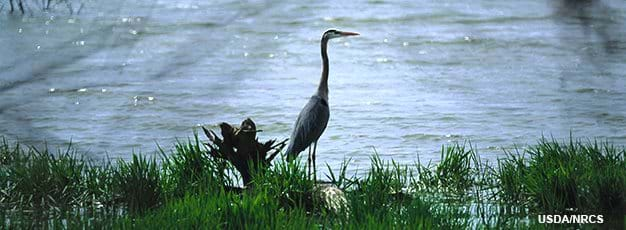Baselines--Key to the Costs and Benefits of Environmental Markets

Farms jointly produce agricultural commodities for sale and environmental services that historically have not been marketed. Recently, markets have been developed or proposed that could allow farmers to generate and sell environmental credits when they adopt farming practices that improve water quality, sequester more carbon, restore wetlands, or provide other environmental services.
Environmental markets use baselines to determine whether proposed improvements by agricultural producers qualify for marketable credits and, if so, the number of credits to be awarded. As a result, setting baseline emissions levels is often a contentious element of market design. Baselines help ensure that market payments result in 'additional' environmental improvements over what would have taken place in the absence of the market. Additionality is required since awarding credits or payments for improvements that have already been implemented, or would normally be expected without a market, undermine the environmental gains expected from the program.
While in theory a baseline can be established that assures that market credits are awarded only for improved emissions levels that go beyond current or projected 'business-as-usual' (BAU) reductions, estimates of BAU emissions reductions are imprecise and expensive to develop. As a result, proxy baselines that reflect imperfect approximations of BAU performance, such as the average regional adoption rate for a given practice, may be established. In practice, existing and proposed environmental markets use a variety of different approaches. For example, Pennsylvania's nutrient trading program calculates tradable credits relative to a minimum practice standard associated with one or more best management practices established for the region, rather than relative to what is actually happening on a specific field when the program is enacted. The Regional Greenhouse Gas Initiative, on the other hand, awards offset credits for installation of anaerobic digesters relative to site-specific uncontrolled manure storage performance estimates.
The range of options for defining baseline emissions varies across several dimensions. Baselines can be:
- Defined by a specific technology/practice or by a baseline year (for example, for all improvements made after 2010, or for adoption of any tillage system with lower erosion levels than a conventional system).
- Constant (static) or changing (dynamic) over time (for example, a dynamic baseline might assume a 10-percent improvement every year in the absence of a market).
- Calculated at the farm level or at a larger sectoral level (for example, the baseline could reflect prevailing practices on each participating farm (or field), or might be set at the average performance level for the entire county where the farm is located).
For any given farm, each of these baselines may over- or under-predict actual BAU emissions.
Due to the complexity and costs associated with defining, measuring, and verifying environmental baseline levels, program managers face a tradeoff between the precision with which environmental performance change can be estimated and the cost of refining those estimates. Baseline selection affects the environmental integrity of the credits generated, the implementation costs associated with an environmental services market, the cost to farmers of generating credits (and the price at which those credits are sold), the number and types of farmers that may benefit from trading, and, ultimately, the number of credits that are traded and the size of the market that is created.
Baselines in Environmental Markets: Tradeoffs Between Cost and Additionality, by Elizabeth Marshall and Marca Weinberg, USDA, Economic Research Service, February 2012

